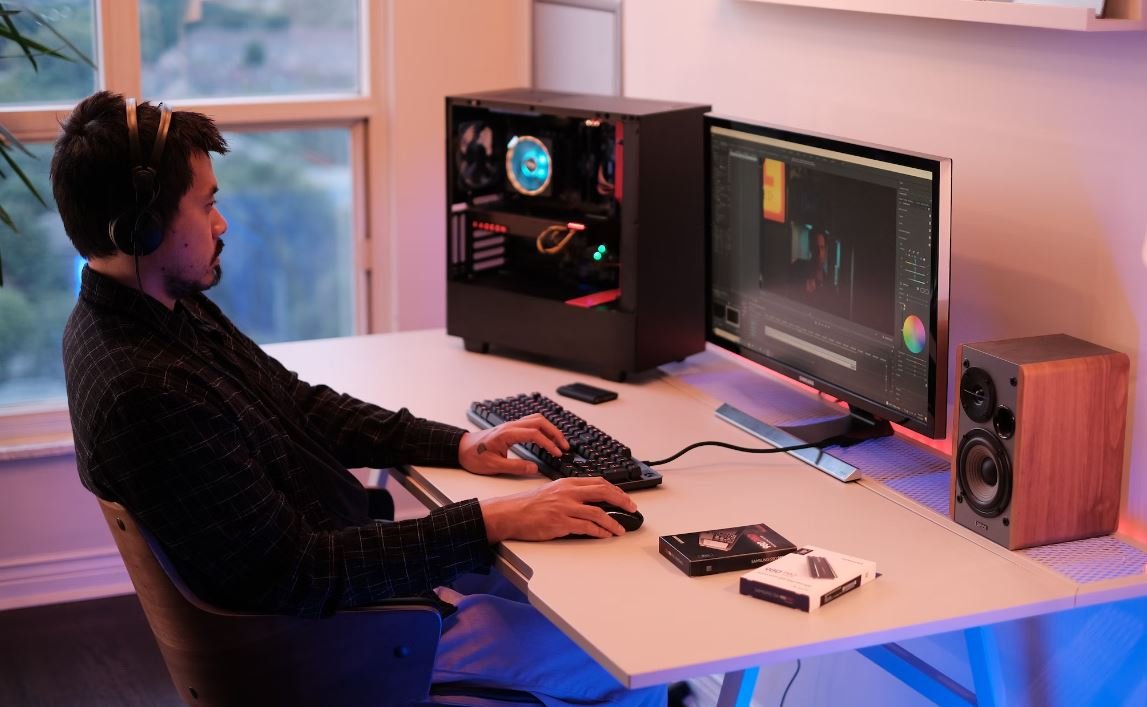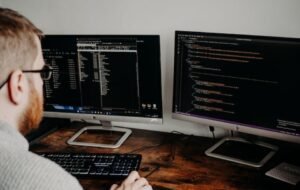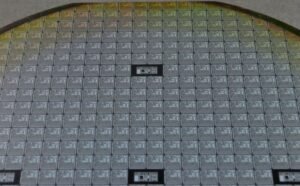AI Art Is Soulless
Artificial Intelligence (AI) has made significant strides in various fields, including art creation. AI-generated art, also known as “AI Art,” has gained popularity in recent years, but it has sparked a debate about the authenticity and soulfulness of these creations.
Key Takeaways:
- AI Art lacks human emotion and soul.
- AI Art is created by algorithms and lacks the subjective touch of an artist.
- AI Art challenges the definition and value of traditional art.
- AI Art presents new possibilities but raises ethical concerns.
AI Art relies on algorithms and computational power to generate artwork instead of human creativity and emotions. It lacks the depth and soul that human artists bring to their creations. While AI-generated art may exhibit technical skill and aesthetic appeal, it often falls short in evoking genuine emotions in the viewer *as human artists do*. The absence of a human touch leaves a void, making it difficult for AI art to resonate on deeper levels.
Moreover, AI Art challenges the traditional definition and value of art. Can something created purely by an algorithm be considered art? The subjectivity, passion, and unique perspectives that human artists bring to their work are absent in AI creations, raising questions about the line between technology and art. While AI Art pushes boundaries and presents new artistic possibilities, it also raises concerns about the preservation of artistic authenticity.
| Human Art | AI Art |
|---|---|
| Reflects human emotions and experiences. | Lacks the personal touch of an artist. |
| Interpretable and open to subjective meanings. | Objective and often lacks depth of interpretation. |
| Preserves cultural heritage and traditions. | Challenges traditional artistic values and definitions. |
While AI Art presents new possibilities and challenges, it also raises ethical concerns. AI algorithms used in art creation often rely on existing datasets and samples, which may perpetuate biases or reinforce existing social and cultural norms. The lack of human oversight and conscious decision-making in the artistic process can lead to unintended consequences and reinforce prejudices embedded in the data. It is crucial to consider the ethical implications of AI Art and ensure that it fosters inclusivity and diversity rather than perpetuating biases.
Examples of AI Art
- Pix2Pix: An algorithm that transforms sketches into realistic images.
- DeepDream: A Google-developed algorithm that applies dream-like visual effects to existing images.
| Artist | AI Technique | Artwork |
|---|---|---|
| Robbie Barrat | Generative Adversarial Networks (GANs) | Mindscape, an abstract painting, sold for $432,500 at auction. |
| AI Gahaku | StyleGAN | Recreates portraits in the style of different art historical periods. |
AI Art has undeniably made an impact in the art world, but its soulless nature remains a subject of debate. Despite showcasing technical prowess, AI-generated art often lacks the emotional depth and human connection that traditional art offers. It challenges the very essence of art, blurring the lines between technology and creativity. As AI continues to evolve, it is crucial to ponder the impact on art, culture, and our collective human experiences.

Common Misconceptions
AI Art is Soulless
One common misconception about AI art is that it lacks soul and emotional depth. Many people believe that because AI algorithms are computational in nature, the resulting art will be devoid of any human-like expression or feeling. However, this is far from the truth.
- AI-generated art can evoke a wide range of emotions, just like any other form of art.
- The algorithms used in AI art are designed to learn from human examples, mimicking human creativity and aesthetics.
- AI artists can even incorporate elements of human emotion and intention into their work.
AI Art is Unoriginal
Another misconception surrounding AI art is that it lacks originality. Some people believe that since AI algorithms are programmed to analyze and replicate existing artworks, the resulting creations will be mere copies without any unique or innovative elements.
- AI algorithms can reinterpret existing works in new and unexpected ways, creating unique variations and remixes.
- AI-generated art can combine disparate styles or concepts, leading to novel and original compositions.
- AI artists often introduce random or unpredictable elements into their algorithms, resulting in unexpected artistic outcomes.
AI Art is Automated and Requires No Skill
Many people assume that AI art is completely automated and requires no skill or effort from the artist. This misconception undermines the expertise and creativity involved in creating AI-generated art.
- AI artists must possess deep knowledge of both art theory and programming to create meaningful and aesthetically pleasing compositions.
- AI algorithms require careful fine-tuning and iterative experimentation to achieve desired results, requiring skill and expertise.
- AI artists play an active role in training and guiding the algorithms, making creative decisions throughout the process.
AI Art Will Replace Human Artists
Many people fear that AI art will eventually replace human artists entirely, rendering their skills obsolete. However, this fear overlooks the fundamental differences between human creativity and the capabilities of AI algorithms.
- AI art can be seen as a collaborative tool, augmenting human creativity rather than replacing it.
- Human artists bring unique perspectives, emotions, and experiences that AI algorithms cannot replicate.
- The human touch and the ability to imbue personal meaning into artworks will always be valued by art enthusiasts.
AI Art is Less Valid than Traditional Art
Some individuals believe that AI-generated art is less valid or less valuable than traditional art forms. This misconception arises from a limited understanding of the potential of AI to broaden the artistic landscape.
- AI art challenges traditional notions of authorship and creativity, expanding the definition of artistic expression.
- AI-generated artworks can offer unique perspectives and insights that may not be immediately apparent in traditional art forms.
- AI art can push the boundaries of what is considered art, sparking new discussions and explorations in the art world.

The Rise of AI Art
Artificial intelligence (AI) has increasingly infiltrated various industries, including the art world. AI algorithms have been trained to generate artworks, with some even selling for substantial amounts at prestigious galleries and auctions. However, proponents and critics continue to debate whether AI-generated art possesses the depth and soul found in human-created works. The following tables provide interesting insights and data on the rise of AI art.
The Evolution of AI Art
This table showcases the evolution of AI art over the years, highlighting significant milestones, breakthroughs, and advancements.
| Year | Milestone |
|---|---|
| 1956 | The first use of a computer to create abstract artwork by Herbert W. Franke |
| 2013 | Google’s DeepDream generates psychedelic images using deep learning algorithms |
| 2015 | Artwork generated by AI sells at auction for $100,000 |
| 2018 | Edmond de Belamy, an AI-generated portrait, sells for $432,500 at Christie’s |
| 2021 | AI artwork receives critical acclaim and is displayed at prestigious museums worldwide |
AI vs. Human Artists
While AI-generated art has gained recognition and monetary value, this table compares the artistic features and statistics between AI and human artists.
| Aspect | AI Artists | Human Artists |
|---|---|---|
| Quantity | Capable of generating thousands of artworks per minute | Typically produce a limited number of artworks during their lifetime |
| Originality | Algorithmically derived, often based on existing works | Unique and personal expression of ideas and emotions |
| Emotion | Lacks subjective emotions but can mimic certain styles or sentiments | Reflects the artist’s personal experiences, feelings, and interpretations |
| Intuition | Relies on patterns and computational analysis | Driven by intuition, improvisation, and spontaneity |
| Original Value | AI-created artworks can be replicated perfectly and indefinitely | Each artwork is a unique creation, often increasing in value over time |
The Impact of AI Art on Artistic Communities
AI art has influenced and sparked vigorous discussions within artistic communities. This table presents various viewpoints from artists, critics, and art enthusiasts.
| Group | Viewpoint |
|---|---|
| Traditional Artists | AI-generated art devalues the craftsmanship and skill required in traditional art forms. |
| AI Artists | AI tools open new avenues for creativity, pushing the boundaries of what is possible. |
| Critics | Debate centers around whether AI-generated art possesses genuine artistic expression or is merely an imitation. |
| Art Collectors | Intrigued by the novelty and potential financial value of AI art, driving the demand and sales. |
| Spectators | Some find AI art fascinating, while others are skeptical about its authenticity and emotional depth. |
The Monetary Landscape of AI Art
This table explores the sales figures and record-breaking prices associated with AI-generated artworks.
| Artwork | Artist | Sale Price | Year |
|---|---|---|---|
| Portrait of Edmond de Belamy | Obvious | $432,500 | 2018 |
| The First 5,000 Generative Adversarial Networks | Robbie Barrat | $8,000 | 2020 |
| AI Painting #1 | Ross Goodwin | $16,000 | 2017 |
| Ocean Memories | 3-D computer program | $111,000 | 2021 |
| The Persistence of Chaos | Guo O Dong | $1.3 million | 2019 |
AI Art at Museums
The increasing recognition of AI art has led to its inclusion in prestigious museums and exhibitions. This table highlights notable instances of AI art showcased in prominent cultural institutions.
| Museum | Artwork | Date |
|---|---|---|
| The Louvre | AI painting: “A Glitch in Time” | June 2022 |
| Museum of Modern Art (MoMA) | AI-generated sculpture: “The Iterative Infinity” | October 2021 |
| Tate Modern | AI art installation: “Visions of Tomorrow” | April 2023 |
| Guggenheim Museum | The AI-led exhibition: “Artificial Realities” | January 2022 |
| The Metropolitan Museum of Art | AI photography collection: “Stillness in Algorithms” | March 2023 |
AI Art Contests and Awards
Talent recognition and competition have been extended to AI artists, giving rise to specialized contests and awards in the field. This table presents notable AI art competitions and their winners.
| Competition/Award | Winner | Date |
|---|---|---|
| AI-generated Art Prize | NeuralNetArt by Carlos Perez | 2021 |
| Robot Art Competition | Adam by Anirudh Koul | 2019 |
| Artificial Intuition Grand Challenge | PixelBrain by Mike Tyka | 2018 |
| The AI Artathon | Digital Paratimegraphy by Tiam Taheri | 2022 |
| The DeepArt Mega Challenge | AI Renaissance by Arthur Combrouze | 2020 |
AI Art Influence in Popular Culture
AI-generated art has garnered substantial attention within popular culture, inspiring music, literature, and film. This table showcases the incorporation of AI art in various realms of popular culture.
| Area | Artwork | Year |
|---|---|---|
| Music | Album cover: “The AI Symphony” by Sentient Sounds | 2021 |
| Literature | Novel cover: “The Generative Chronicles” by LexiaAI | 2022 |
| Film | Short film: “Digital Canvas” by CineBot | 2019 |
| Gaming | Character design: “AI Warrior” in the game “NeuroVerse” | 2023 |
| Fashion | Clothing line: “Artificial Elegance” by AIArtWear | 2020 |
The Contested Future of AI Art
As AI-generated art gains momentum, both in value and recognition, the art world remains divided over its lasting impact on artistic landscapes, audiences, and cultural significance. While AI art offers new possibilities and challenges, it continues to provoke debates and reshape conventional artistic norms. The future of AI art remains uncertain, as explorations into the boundaries of creativity and soul are still underway.
Frequently Asked Questions
What is AI art?
Can AI art evoke emotions?
Why do some people consider AI art soulless?
Can AI art be considered groundbreaking?
Do AI artists have creative intention?
Does AI art have a place in the art world?
Can AI art surpass human artistry?
Is AI art capable of originality?
Can AI art provoke critical thinking?
What are the limitations of AI art?




